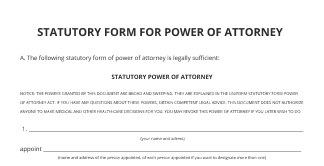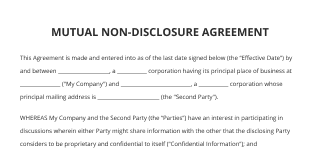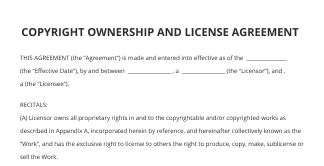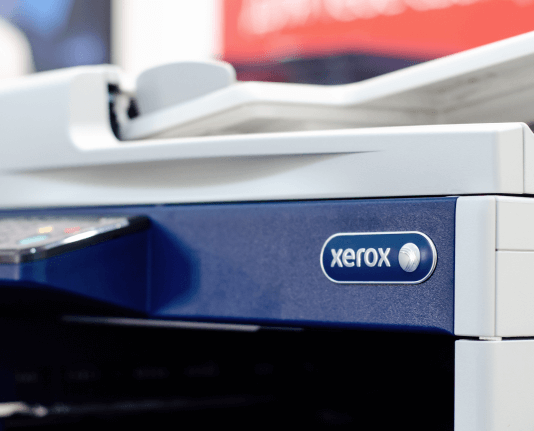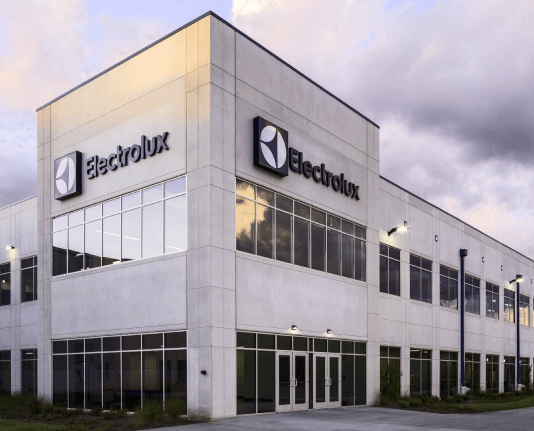Découvrez Le Meilleur Exemple De Facture D'électricien Pour L'industrie De La Construction
Faites avancer votre entreprise avec la solution de signature électronique airSlate SignNow
Ajoutez votre signature juridiquement contraignante
Intégrez via l'API
Envoyez des documents conditionnels
Partagez des documents via un lien d'invitation
Gagnez du temps avec des modèles réutilisables
Améliorez la collaboration d'équipe
Découvrez les signatures électroniques airSlate SignNow en action
Solutions airSlate SignNow pour une meilleure efficacité
Les avis de nos utilisateurs parlent d'eux-mêmes






Pourquoi choisir airSlate SignNow
-
Essai gratuit de 7 jours. Choisissez le forfait dont vous avez besoin et essayez-le sans risque.
-
Tarification honnête pour des forfaits complets. airSlate SignNow propose des abonnements sans frais supplémentaires ni frais cachés lors du renouvellement.
-
Sécurité de niveau entreprise. airSlate SignNow vous aide à respecter les normes de sécurité mondiales.

Exemple de facture d'électricien pour l'industrie de la construction
Créer des factures professionnelles est crucial pour les électriciens de l'industrie de la construction afin de maintenir un flux de trésorerie stable et d'organiser leurs transactions commerciales. Utiliser une plateforme de signature électronique fiable peut rendre ce processus fluide et efficace. Ce guide vous accompagnera dans les étapes d'utilisation d'airSlate SignNow pour faire signer rapidement et en toute sécurité vos documents, tout en améliorant votre productivité.
Exemple de facture d'électricien pour l'industrie de la construction
- Ouvrez votre navigateur web préféré et rendez-vous sur la page d'accueil d'airSlate SignNow.
- Inscrivez-vous pour un essai gratuit ou connectez-vous à votre compte existant.
- Téléchargez le document que vous souhaitez faire signer ou envoyez-le pour signature.
- Si vous prévoyez d'utiliser ce document de manière répétée, créez un modèle pour une utilisation future.
- Accédez à votre fichier téléchargé pour le modifier : ajoutez des champs à remplir et saisissez les informations nécessaires.
- Ajoutez votre signature et désignez les champs de signature pour les autres signataires.
- Cliquez sur 'Continuer' pour finaliser la configuration et envoyer votre demande de signature électronique.
En conclusion, airSlate SignNow offre une méthode efficace pour gérer les besoins de signature de documents dans l'industrie de la construction. Sa plateforme conviviale vous permet d'optimiser votre flux de travail et de garantir que vos factures sont signées et traitées rapidement. Ne manquez pas une façon simple d'améliorer vos opérations commerciales !
Commencez votre essai gratuit dès aujourd'hui et voyez comment airSlate SignNow peut simplifier votre processus de facturation.
Comment ça marche
Fonctionnalités airSlate SignNow appréciées par les utilisateurs
Obtenez des signatures juridiquement contraignantes dès maintenant !
FAQ invoice for electrician
-
Qu'est-ce qu'un exemple de facture d'électricien pour l'industrie de la construction ?
Un exemple de facture d'électricien pour l'industrie de la construction sert de modèle qui décrit les services fournis par les électriciens, en détaillant les coûts et les conditions de paiement. Il aide les entreprises à maintenir leur professionnalisme tout en s'assurant qu'elles sont rémunérées avec précision pour leur travail. L'utilisation d'une facture standardisée améliore la clarté et facilite la tenue de registres organisés. -
Comment airSlate SignNow peut-il aider à créer un exemple de facture d'électricien pour l'industrie de la construction ?
airSlate SignNow simplifie le processus de création d'un exemple de facture d'électricien pour l'industrie de la construction en fournissant des modèles personnalisables. Les utilisateurs peuvent facilement ajouter leur branding, ajuster la mise en page et saisir des détails spécifiques sur leurs services. Cela rationalise le processus de facturation et renforce le professionnalisme de vos transactions. -
Y a-t-il un coût associé à l'utilisation d'airSlate SignNow pour les factures d'électricien ?
airSlate SignNow propose une gamme de plans tarifaires adaptés aux besoins de différentes entreprises, y compris des options pour créer un exemple de facture d'électricien pour l'industrie de la construction. Le coût varie en fonction des fonctionnalités et du nombre d'utilisateurs, permettant aux entreprises de choisir un plan qui correspond à leur budget. De plus, l'efficacité gagnée grâce à la plateforme peut entraîner des économies de coûts à long terme. -
Quelles fonctionnalités sont incluses dans le service airSlate SignNow pour les factures d'électricien ?
Avec airSlate SignNow, les utilisateurs ont accès à des fonctionnalités essentielles telles que des modèles de factures d'électricien, la signature électronique et le suivi des documents. Cela facilite l'envoi des factures, la réception des approbations et le suivi des statuts de paiement. Ces fonctionnalités sont particulièrement avantageuses pour les électriciens de l'industrie de la construction souhaitant rationaliser leurs processus de facturation. -
Puis-je intégrer airSlate SignNow avec d'autres outils logiciels pour la gestion des factures ?
Oui, airSlate SignNow prend en charge les intégrations avec divers logiciels de comptabilité et de gestion de projets, ce qui facilite la gestion de votre exemple de facture d'électricien pour l'industrie de la construction en parallèle avec d'autres opérations commerciales. Cette connectivité garantit que toutes vos données financières sont synchronisées et à jour, réduisant la saisie manuelle et les erreurs. -
Quels sont les avantages d'utiliser un exemple de facture d'électricien pour l'industrie de la construction ?
L'utilisation d'un exemple de facture d'électricien pour l'industrie de la construction permet des cycles de facturation plus rapides, une communication plus claire avec les clients et une meilleure organisation des dossiers financiers. Elle minimise également les litiges concernant les conditions de paiement en détaillant clairement les services rendus. De plus, disposer d'une facture professionnelle peut renforcer la crédibilité et la réputation d'une entreprise. -
Comment puis-je personnaliser mon exemple de facture d'électricien sur airSlate SignNow ?
Personnaliser votre exemple de facture d'électricien pour l'industrie de la construction sur airSlate SignNow est simple. Les utilisateurs peuvent modifier les champs de texte, ajouter leur logo et choisir des mises en page qui reflètent l'identité de leur marque. Ce niveau de personnalisation aide à garantir que les factures remplissent leur fonction tout en étant alignées avec l'image de marque globale de votre entreprise. -
Est-il facile d'envoyer et de suivre les factures d'électricien avec airSlate SignNow ?
Absolument ! airSlate SignNow offre une interface conviviale qui facilite l'envoi et le suivi de votre exemple de facture d'électricien pour l'industrie de la construction. Vous pouvez surveiller quand les factures sont ouvertes, signées et payées, ce qui vous permet de rester informé sur votre flux de trésorerie tout en réduisant la charge administrative de la gestion manuelle.
Ce que disent les utilisateurs actifs — invoice for electrician
Recherches associées à invoice for electrician
Electrician invoice example for Construction Industry
let's talk about reading commercial blueprints [Music] you have not seen the residential blueprints video that I did make sure that you check that out as well very similar kinds of stuff but residential and Commercial are different in that uh commercial are going to be engineered drawings so things in commercial a lot more specific you typically you have an engineer that's doing a bunch of calculations because there's things with buildings a lot of businesses tend to have specific type of power that affects the entire power grid so they have to figure out if they have a lot of inductive loads a lot of like motor loads and equipment and stuff like that that can really affect the utility system more than a residential application would where you've just got like you know somebody's got some computer and they've got lights and they're vacuuming and watching TV the impact on the utility is not as severe so it doesn't need to be calculated so dramatically so specifically for residential so most of the time in residences we're dealing with architectural drawings some architect just drawing stuff up and it's up to you the electrician to figure out where everything goes but with a commercial plan things are very very planned down to the T calculated very severely so let's break into actually what's inside of one of these foreign so typically the beginning of a plan is going to have the the overview of the whole property right we're going to have like kind of a street view a block view so that you know where what the whole lot is and it kind of gives you some extra information parking all kinds of stuff like that and then you're going to have some general symbols General notes General things about the entire job and then as you flip through you're going to go through um more details again in the beginning of this we're talking architectural so you're going to see all of these pages are going to be A1 A2 A10 things like that so that's just the architectural uh general information about the the structure and the design of the place the next page they show this is a kitchen so um or it's a restaurant so they're gonna show you know the the general kitchen area of this whole thing while there is you know some storage and bathrooms and stuff back there that's not like this is the main meat and cheese of what's going on and then the dining room is the other kind of like you know main thing that's going on restaurants are typically I talked about as front of house and back of house back of house is always where the food's made and the whole business is run and then the front of house is where everybody sits so just kind of a general overview of that um I'm not going to go through every page but uh we should have a uh elevation just like we had on the other one shows the front elevations we've got a ceiling floor plan so this is the existing framing plan so this building already had a whole bunch of ceiling trusses throughout the whole thing and it shows where all of the walls are and then it has a elevation so you can kind of see you know this reflected horizontally um anyway so this is you know that's General you're going to have a roof plan as well so the the ceiling plan was inside the roof plan is up on the actual roof what's going on up there because there's going to be ducks and Air Handlers and exhaust fans and all kinds of equipment going up on the roof so they just give you an overview of that then we've got more elevations so it shows walls bathrooms mirrors sconces just like we had in the residential um and then we've got an equipment plan so this is in this situation we've got all of this kitchen equipment this is a restaurant right so we've got all kinds of stuff on the cook line we've got a prep area in the back we've got a dishwashing section we've got Walker a walk-in cooler refrigerators freezers we got this whole front of house section where people take orders and there's point of sale you know you walk up and give your order a lot of times there's like little refrigerators and drink stations and salad stations and stuff like that in that area so this just shows all of the equipment that's being installed so that we know what to wire so the mechanical contractors know you know what where they need to put things another thing that we've got is a reflected ceiling plan so this is not actually the lighting plan but it shows all of the lighting on it so it shows that there's going to be all these two by four LED lights throughout here there's going to be some 1x4 lights that are going in the back spotlights it shows all these little cans and everything but this is just kind of showing what the ceiling looks like for everybody there's exhaust you know in there but that's not actually electrical again we're still in the A's so let's skip through foreign so that was all of the architectural side of things now the rest of the plan is going to be our MEP drawings or our mechanical electrical and plumbing drawings so we've got a general notes and Provisions thing we've got a symbols page but this is like everything the mechanical contractor needs to know it's a good thing it has to be an electrician to read this as well so that you understand what they have to do you don't have to go through every single detail but it's a good idea to understand what they're doing as well because the more that you know about all the other trades the more you're going to be able to like work with them and know what's going where so you're not like double doing all of the work because you didn't read the plans and you didn't know where something like a duct was going and they might have some monster duck riding through it you put a whole line of cans right above it so it just helps to know what they're doing so you can go talk to these people so a mechanical plan it's all mechanical stuff right this is the rooftop so they know where to put all their ducks and they know where the air handlers are going and where they need to make their penetrations it's same thing as the electrical it's going to give them details on what kind of Hardware what kind of mounting they need to do you know so this is all going to be inspected so this is what the mechanical contractor has to follow just like our plans you know that we give a plan we get it submitted and then we have to wire it to that and then little things are going to change for sure but it's just um overall all the big things that we need to know are in here so anyways that's mechanical then the next is electrical same thing on electrical right we have a whole plan here or a whole list of notes Provisions Legend everything so this is the general read through all of this stuff because this is everything you need to know for the job typically with a little start out well they're all gonna be different you're going to have one page that's lighting it's not going to be power it's not gonna be all your receptacles and all that stuff typically you're gonna have a lighting plan and then on a different page you're gonna have a power plan so in this case we've got lighting shows what they wanted like specific layouts of switches switch Banks to turn certain things on I when I'm wiring stuff you can see all these say L3 these say L2 L5 each one of these numbers corresponds to a specific switch bank or a specific switch because they have a lighting control system in here so I just wanted to make it very visually easy to understand that these are all on one switch and that's the T switch so I put t as yellow and I highlighted yellow I'm crazy with highlighters on jobs and I draw like every red box right here is a junction box that I've got in a ceiling and I write what panel it's going to L1 L2 so I just know where all of the junction boxes are because this isn't this whole thing is a grid ceiling so if I need to know like oh there's a junction box I I can't figure out where this is I think there was a junction box up there open up the plan oh yeah I got three of them right there I even wrote the circuit numbers and pencil next to each one so I already know what circuits are in that box that's just how I do things you guys don't have to do that but that's what I do another thing you're going to see you're gonna see these little circles with a number in them um a lot of places you'll see like one here three one three five if you look over here circle with a number in them these are all the notes for the drawings so a lot of times instead of just having long crazy notes or putting just some random little number somewhere that's not going to get seen they will call it out with a big circle and so it lets you know like hey if you're curious about this exit sign right here or this combo it's a it's an emergency and exit go to one and then you might have something I don't know what was five over here it looks like an occupancy sensor call out maybe uh switch Bank oh yeah that was a switch Bank location so they wanted to hide the switches so customers didn't have access to them so there's this back storage area that they wanted to put all of these lighting control switch banks in so they just said this is the location of the switch bank and then there's another one five actually has two call outs for that same one note so there's a switch Bank location for one of them in the switch bank for the other one so anyways you have the lighting plan these are all one kind of light they're two by fours these are one by fours and these are all cans or they're not really cans they were like kind of little mono points um but that's the lighting next page is power so we're still within ease now you notice there's no Lighting on here at all this is just call outs for equipment so uh with this specific job I remember this was years ago but what they did is they had a separate sheet that came with the plan that was just an addendum to the plan and it listed like E1 E2 E3 E4 E5 all of the equipment that was going into this kitchen so we knew exactly what model numbers Dimensions how much power it took everything so all of these little call outs they're similar to notes but you can see they're not over here but like E64 right there's so many that they had to create a separate page just for that but it wasn't actually part of the plan because it's just a schedule of equipment and Equipment often changes another thing you'll notice is that you've got all these l1-43 l1-45 um well a lot of these are hand-drawn l1-53 l1-51 those are circuit numbers and panel numbers L1 means panel L1 so I've got three panels over here I've got l1a l1b and L2 so it lets me know this is from panel L1 circuit 43. so I've got four panels that are going on the inside of this restaurant so I need to know where I'm wiring things to so that's what all of that's about I like to again highlight typically I'll do colors so anything that's panel L3 I'm going to do all of the home runs in that color just makes it easier to identify things when you're going through it you'll notice too on the the home runs that are marked by the architect or by the engineer they have these little lines on them and it's just telling you it's a hot neutral on the ground that's what those lines mean so all of their home runs that they draw they're gonna do that like this one right here is three phase so you've got one two three four and three little ones so you've got uh three different phases in neutral and grounds for each phase and then when I draw mine you know I do it a little bit different like two lets me know that it's going to be 220 stuff like that but that is your power plan it's going to show receptacles all your home runs sometimes it'll have equipment if it's a situation like this where there's lots of equipment now we have a roof plan as well so it says rooftop but we're in electrical this lets me know what all of the HVAC equipment is we've got little exhaust fans up on the roof so in the kitchen and bathrooms and stuff we have to you know have air that leaves so we have all of these pieces of equipment and it shows what circuit numbers what panels everything comes from it shows that you need a GFI circuit up there to service the equipment so it's the electrical version of the HVAC equipment plan and then we have a lighting control panel schedule this you might not have on your job but with this I said we have lighting Control Systems so it shows what circuits are specifically designated for the lighting control system and then I have a light fixture schedule another thing you're going to have on jobs is all of your light fixtures are going to be planned out ahead of time so they already know you know from from Acuity lighting 120 volts recessed can it's a four inch LED down light so if you're ever wondering like what size cans are getting put in here if you're in a commercial environment you're probably going to have a light fixture schedule so you can answer that question on your own just flip through and then uh on the actual lighting plan you'll have it'll say like L1 next to it or within the light or something like that it'll say L1 L2 L5 not panel L1 and L2 don't get confused on this uh it'll just say L1 or it might say like a A2 something like that but it shows you this that's the call out so that you can look at this lighting light fixture schedule and figure out what lights uh go where okay so on Commercial uh plans we've got the service notice on the residential we didn't have any of that that's not planned for services are planned for by Engineers uh in commercial so we have a riser diagram some people call it a one-line diagram but a one line diagram is going to show you how everything is wired at the service it doesn't necessarily have to look exactly like this but the series or the order in which things are done has to be called out so this will actually this is the service grounding detail so this shows you how they want everything grounded all connected you know from the CT and it even shows you what size grounds you need to run now it may be wrong for code but the engineer drew it so if you follow what they did they take the liability on for that because it's drawn exact it's wired to spec if something's not right then you need to get a hold of the engineers and say hey this isn't right or they might say yeah but we derated and we have our own way of doing things and we still stand behind it and you can still do it that way but a lot of times code and Engineering is a little bit off if something's like way off you know like you have way too small a wire on here for what's uh what's actually being installed like that's something you need to make a call and let the Builder know and just be like I don't feel comfortable running what they said I think it's just a misprint I think you type something up Engineers are wrong a lot you know like they're great Engineers are awesome you know they're smart they're also human and they mess up so you're going to come across drawings that are not right um so we've got the Riser diagram but it'll show this is where the meter is going they're going to have a CT enclosure which just means that they're going to have little Donuts inside of there in each hot that's coming in to the building from the Riser is going to be metered because the wires are probably so big that you can't fit them inside of an actual meter so there's low voltage wires that go to those donuts and the meter just uses low voltage wires to detect how much current is flowing through each one of those conductors through the donuts so the CTS all go in a CT enclosure that goes down to a wire way some people call these gutters auxiliary gutters but a just some kind of way to run the wire a wire away and then from then you're tapping out for um what is Note 4 say a new 240 volt 225 amp panel number five is 240 volt 225 amp three pole so you've got a single phase and a three phase um and then it shows you know like how these should go up into the building or you know go across to these other panels so from this number five panel we're going to be going up and running to a new L2 panel and then from the other number four panel from this new 225 amp single phase we're going to be running up and over to L1 which is a two section panel it's really interesting is section one section two which essentially just means it's one monster panel because there's so many circuits they don't make a panel big enough so they're going to have two panels side by side that are just wired into one they connect it to the other one so it's essentially if you just flipped them they would be one like massive panel so that's what a two section panel is it's just two different panels that are the same panel um from one of those you can see another wire or another conduit goes up and goes and feeds panel three so panel two is isolated panel uh L1 has L3 coming out of it so that's how you can read where are where's the main power coming from and what how is all of the electrical system actually working now one other thing that's really helpful to note is all of these conduits that you see there's little notes this says three number twos and a number six copper G or ground and it says one and one quarter inch C which means in a one and one quarter inch conduit another example um over here it shows what the actual Riser is it says two sets of four three out conductors that means there's gonna be four of them they're three odd and there's two sets of those so they're parallel feeding and it says two inch conduit then uh tail five foot minimum at Weatherhead so they're saying just like leave five feet at the weather head so that they have something to work with but yeah so it gives you every bit of detail that you need to know about the service really so um that's your one line diagram and then the last page that you're gonna have uh this is 601 this is your panel schedule so we have a lot of different panels going on here we've got our L1 section one L1 section two it gives you information about the actual panel it's a 225 amp mlo which means it's main lug there's not a main breaker it says it's voltage 120 240 it's a single phase three wire panel meaning hot hot neutral three wire it shows that it's a 225 amp bus or 225 amp panel so what I do you don't have to do this but it just makes it easier for me and my dummy helpers I put red black red black red black you'll notice red starts first city of Austin always does red on the left it's just different than the rest of the NEC but to make it easier visually to understand I just on my one lines I do it on all of these too so you can see single phase right there's no blue in any of that but there's blue here so this is my one three phase panel anytime I make changes I I take uh white out and like actually rewrite stuff in there because a lot of times things do change but yeah that's it panel level three panel L2 this is a 225 this is a 100 amp panel this is a 225 this is a 225 so if you ever get a bunch of equipment too and you're like oh crap I don't know which one was L2 out of all of these enclosures sitting here you can just come over and look be like oh l3s are 100 amp so that's going to be that tiny one right there it's just that's how you might see journeyman know where things are going really quickly and you're like how do you just know that it's because we've had to look at all of this stuff right we've had to look through these plans so many times and talk about and think where things are going so we have to remember what single phase and what's three phase so we just have all of this information at our disposal and we're flipping through this thing all the time so as a helper I recommend that you do the same thing start to really pay attention to what's going on in the plans I wouldn't be sitting here while everybody's working and you should be working and wiring stuff just like sitting here looking at the plan but if you're a journeyman and you got 10 people on a job site I would be sitting here looking at the plan because you should be running the other nine people on that job site making sure that everybody else has stuff that they're doing and at that point you're just keeping the train going so you need to really pour over this thing in detail to make sure that you have a plan for everybody and that you're executing that plan how it should go so if you ever just on a job and you see a journeyman just staring at a plan for like hours it might be because the job's really crazy and they need to understand all of the details and then when you've got 15 people coming up and asking you all these questions you don't have enough time to work anyways so knowing the plan very very well is really important and then anyways I'm not going to go in depth Plumbing pretty much the same thing as mechanical it's just Plumbing right same layout same information just lets them know everything and then you might have handicap accessibility stuff this was actually something at the very beginning that I didn't show but this has stuff about hinges doors openings um you know like doorways it has you know what all of the handicap rules are for things so there's ADA compliance and a lot of things this is commercial so this definitely has to have Ada involved so it has to be accessible for somebody within a wheelchair or anybody that's got mobility issues all right so that is it for commercial plans again if you have not seen the residential video make sure that you go check out the residential video very similar kind of things but there's a lot of differences to consider as well thanks for watching I love you crazy people and I'll see in the next one
Show moreObtenez plus pour invoice for electrician
- Obtenez votre modèle de facture horaire gratuite pour les organisations à but non lucratif
- Modèle de facture horaire gratuite pour l'immobilier
- Obtenez votre modèle de facture horaire gratuit pour le commerce de détail
- Modèle de facture horaire gratuite pour le personnel
- Obtenez votre modèle de facture horaire gratuit pour l'industrie technologique
- Modèle de facture horaire gratuite pour la science animale
- Obtenez votre modèle de facture horaire gratuite pour la banque
- Modèle de facture horaire gratuite pour l'hôtellerie
Découvrez d'autres invoice for electrician
- Découvrez l'application de signature PDF gratuite pour ...
- Découvrez l'application de signature gratuite conçue ...
- Découvrez le meilleur service de signature en ligne ...
- Découvrez un logiciel de signature PDF en ligne ...
- Téléchargez un logiciel de signature PDF gratuit pour ...
- Découvrez des solutions de signature PDF gratuites qui ...
- Découvrez votre solution de signature électronique en ...
- Découvrez le meilleur logiciel gratuit pour signer des ...
- Installer l'application de signature en ligne pour une ...
- Créez facilement votre générateur de signature ...
- Découvrez les meilleurs outils de signature de ...
- Obtenez votre certificat de signature PDF gratuit avec ...
- Signez des documents en ligne en gros gratuitement avec ...
- Découvrez le meilleur logiciel de signature gratuit ...
- Insérez facilement une signature dans Acrobat Reader ...
- Obtenez votre certificat de signature en ligne gratuit ...
- Découvrez le logiciel de signature électronique ...
- Découvrez l'application gratuite d'édition et de ...
- Commencez avec le meilleur signataire et éditeur de ...
- Découvrez le meilleur éditeur et signataire PDF ...





